Rachel and I took lots of photos when we visited The Great South Florida Food Forest Project over Thanksgiving. Let’s take a look at some of the interesting things going on in this tropical urban backyard food forest.
Let’s start with…
The Weird Ground Cover Layer
Something unexpected has happened in the ground cover layer of this food forest. Since my parents don’t do a lot of gardening and because I’m not around to plant and maintain the live-fast-and-die-young parts of this project, an interesting variety of weeds and ornamental plants have sprung up to fill the ecological void at the lower levels.
It’s pretty and tropical and it keeps the ground covered and moist. Good enough. Plus, whatever that green wildflower in the middle is, the bees love its blooms:
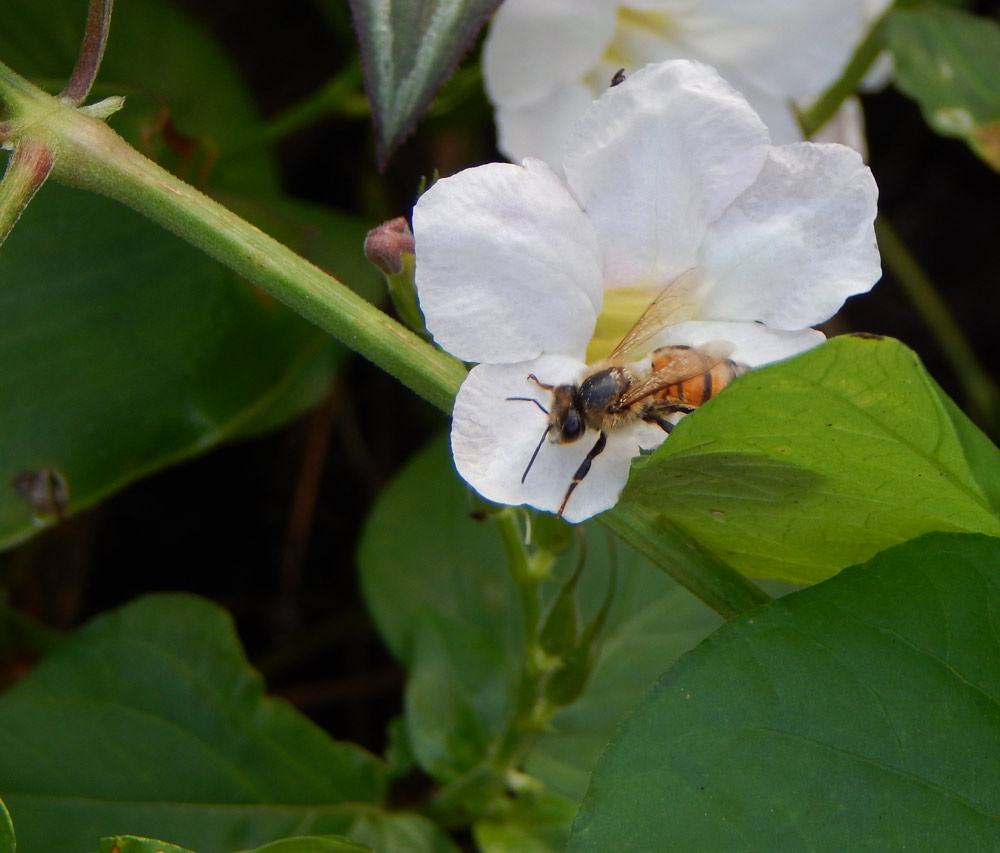 Eddy, my parents’ neighbor, keeps a couple of boxes of bees in his backyard so the food forest is always buzzing. That’s great for our fruit set.
Eddy, my parents’ neighbor, keeps a couple of boxes of bees in his backyard so the food forest is always buzzing. That’s great for our fruit set.
I threw a bunch more seeds around when I visited so we’ll see what pops up next:
Now let’s look at some…
Great Successes
The tropical almond has simply exploded. I planted it 2.5 years ago as a tiny sprout. Look at it in this video!
I can’t believe how fast that tree has grown and borne fruit. The nuts are excellent, though a little bit of work to access.
Here’s another success: the chocolate pudding fruit tree –
It’s just taller than I am and is bearing fruit. I’m thrilled with its growth.
Another tree that has been bearing prolifically is the Starfruit. I got to eat a few while we were there and they’re simply delicious fresh from the tree.
If you live inside the range where starfruit (AKA carambola) grow, plant a tree. They’re attractive and productive.
Here’s another ongoing success:
I drank the water from multiple coconuts while I was down there, plus ate nutmeats to my heart’s content. Coconuts are wonderful for you and very easy to grow under the right conditions. That tree just turned 21 and I’m quite proud of it – it pre-dates the rest of the food forest by 16 years!
Here’s another success:
Look at that thriving avocado! I planted it from a pit and it’s now taller than I am. Heck yeah.
Pests and Pest Control
One of the problems we’ve had with the fruit trees is this pesky little insect:
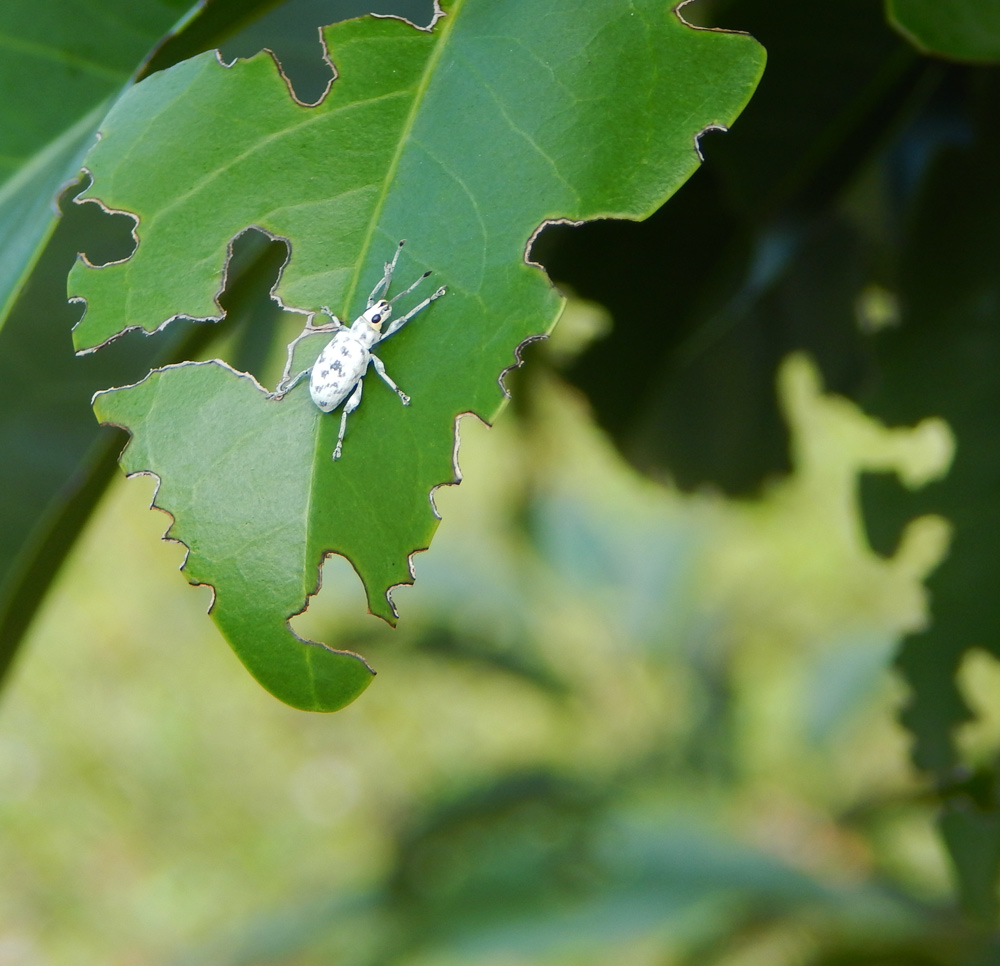 That’s a Sri Lankan weevil, an imported pest that chews up the leaves on a wide range of species – many of which are prized tropical fruit trees. It ate most of the leaves on our little canistel tree before Dad knocked them out with a round of Sevin dust.
That’s a Sri Lankan weevil, an imported pest that chews up the leaves on a wide range of species – many of which are prized tropical fruit trees. It ate most of the leaves on our little canistel tree before Dad knocked them out with a round of Sevin dust.
One positive sign we discovered in the food forest is this bundle of braconid wasp cocoons on the bottom of a cassava leaf:
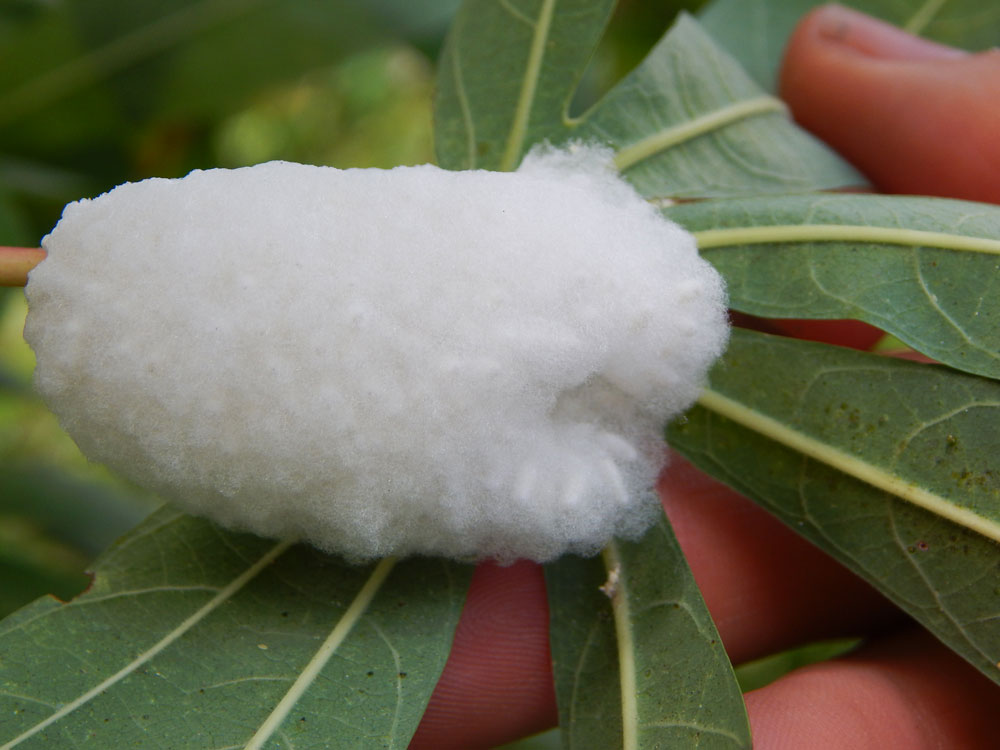 They’re a destroyer of caterpillars, particularly hornworms.
They’re a destroyer of caterpillars, particularly hornworms.
If you want to see more on this creepy parasitic beast, click here. If you dare.
And More!
Here are a few more photos from the food forest to wrap things up. First, a bursting bitter gourd:
A blooming nitrogen-fixing cassia I started from seed:
Orchids blooming beneath the mango tree: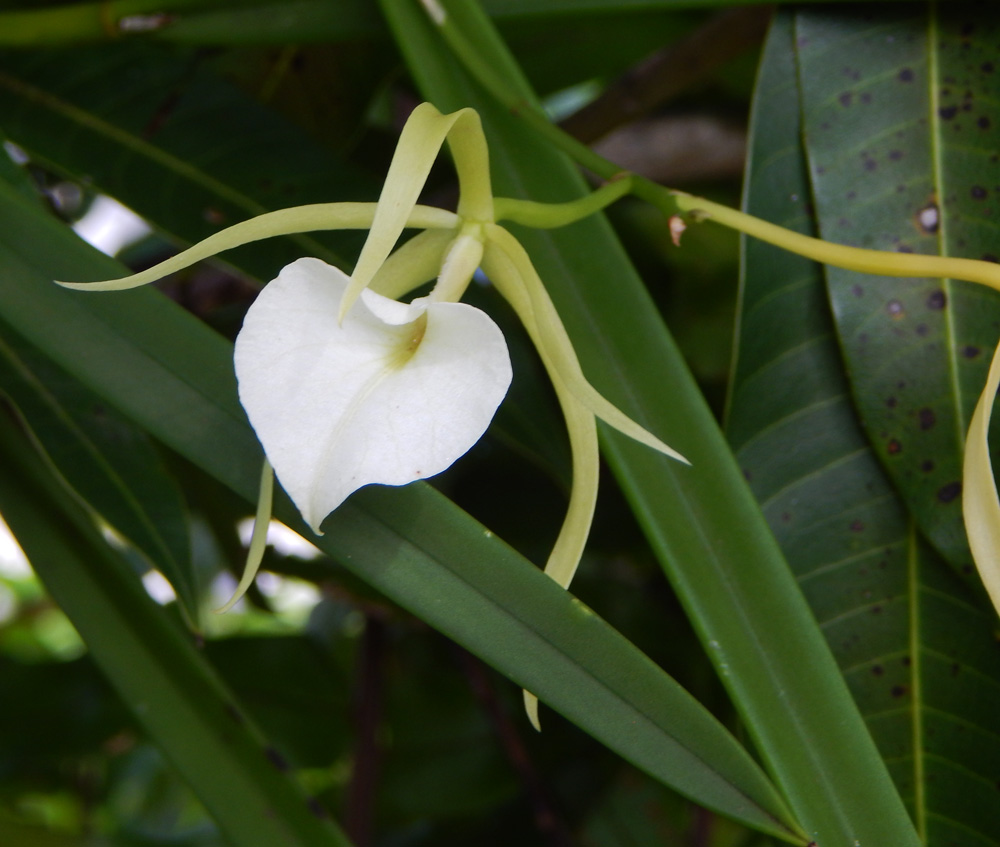
A felled tree turning into soil: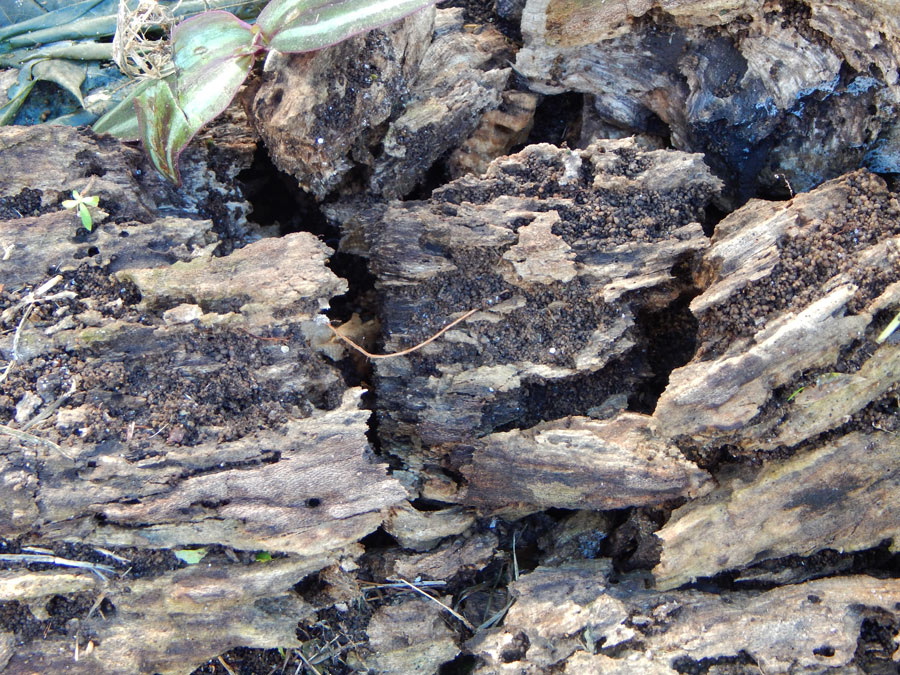
A wasp patrolling the grumichama tree for caterpillars: 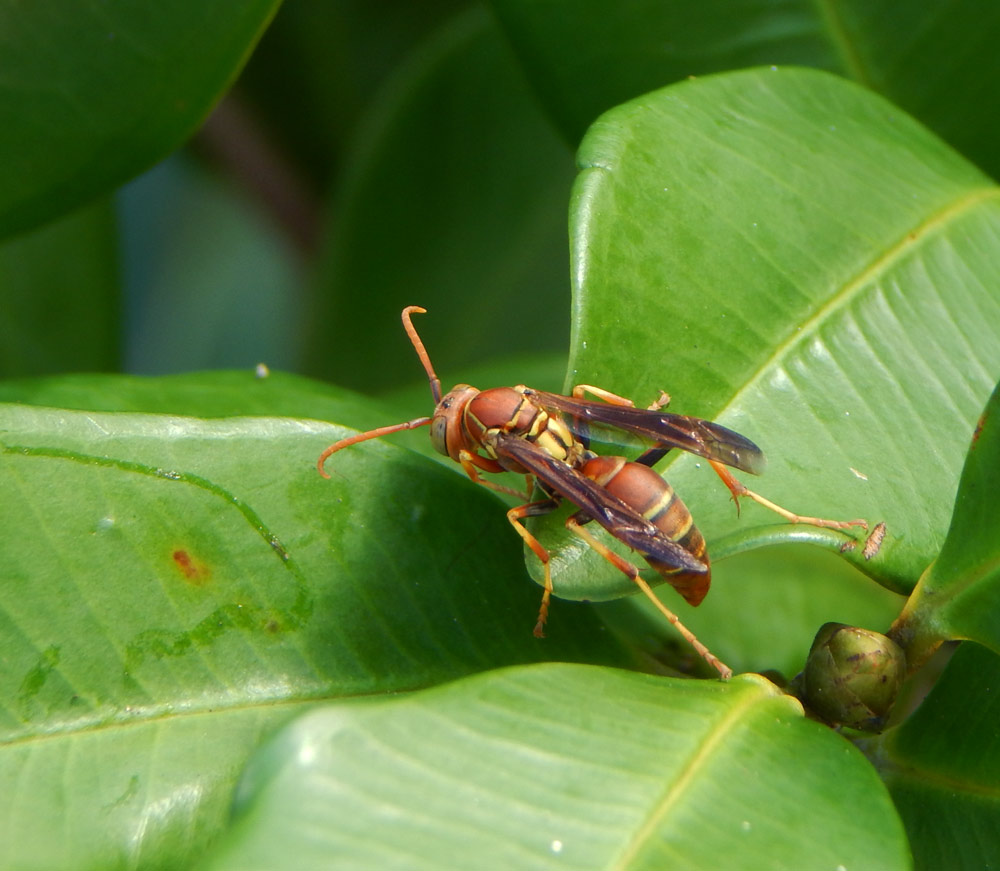
Isn’t all that life a LOT more interesting than grass? And to think – this was bare sand and weeds when we started a few years ago.
If you missed my video tour, here it is again:
Plant a food forest! Go get my book, go through the species and turn your grass into food. It’s easy and more fun than you can imagine. Butterflies, tropical fruit, honeybees and abundant life spilling out all over.
I can’t wait until the other trees get big and start bearing – particularly the cashew. That’ll be awesome.

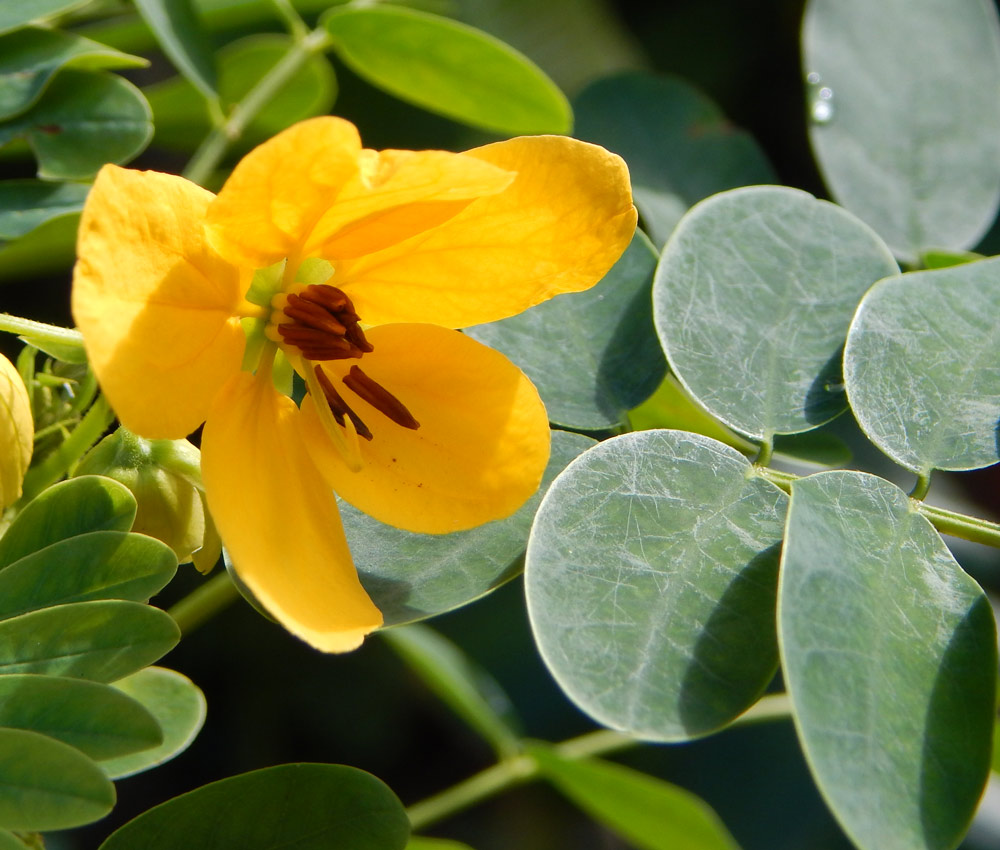
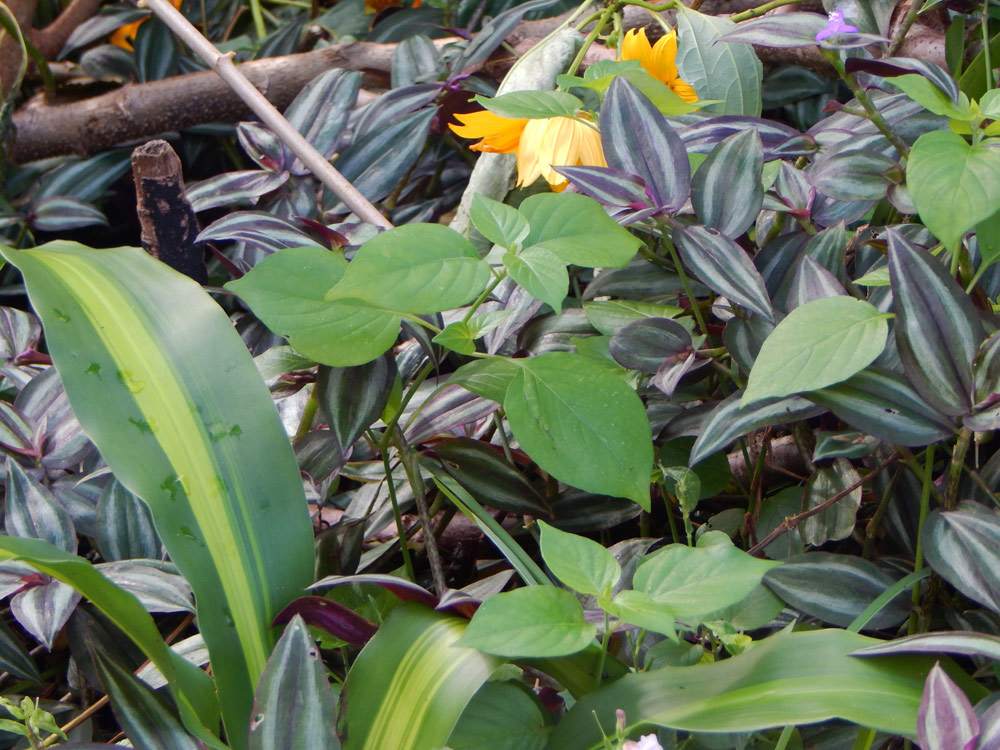
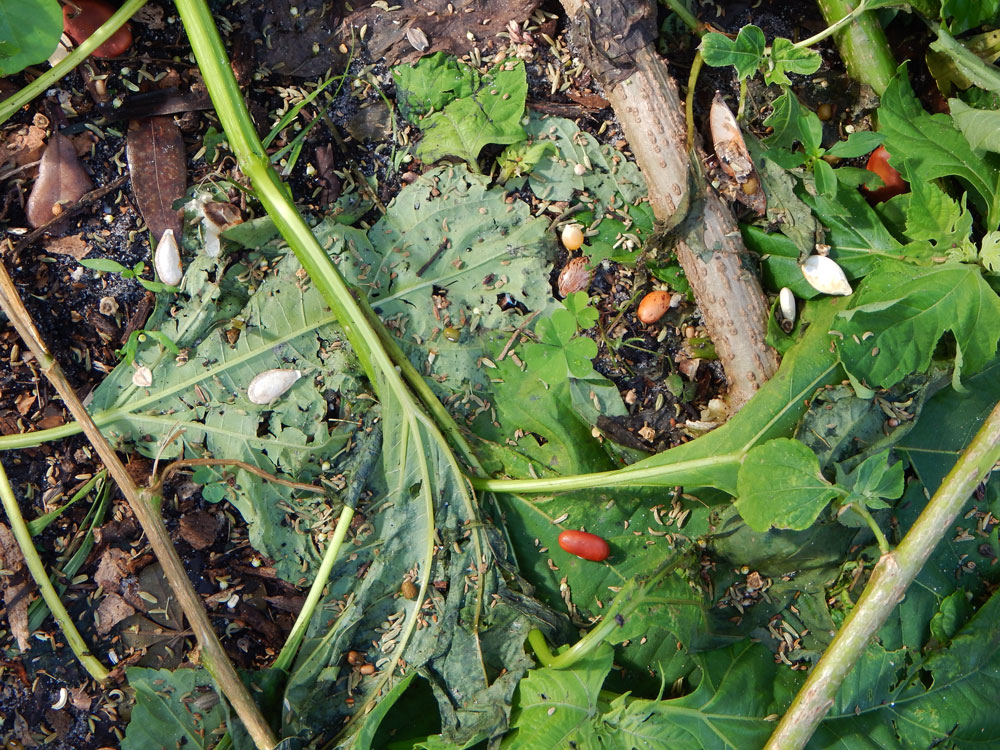
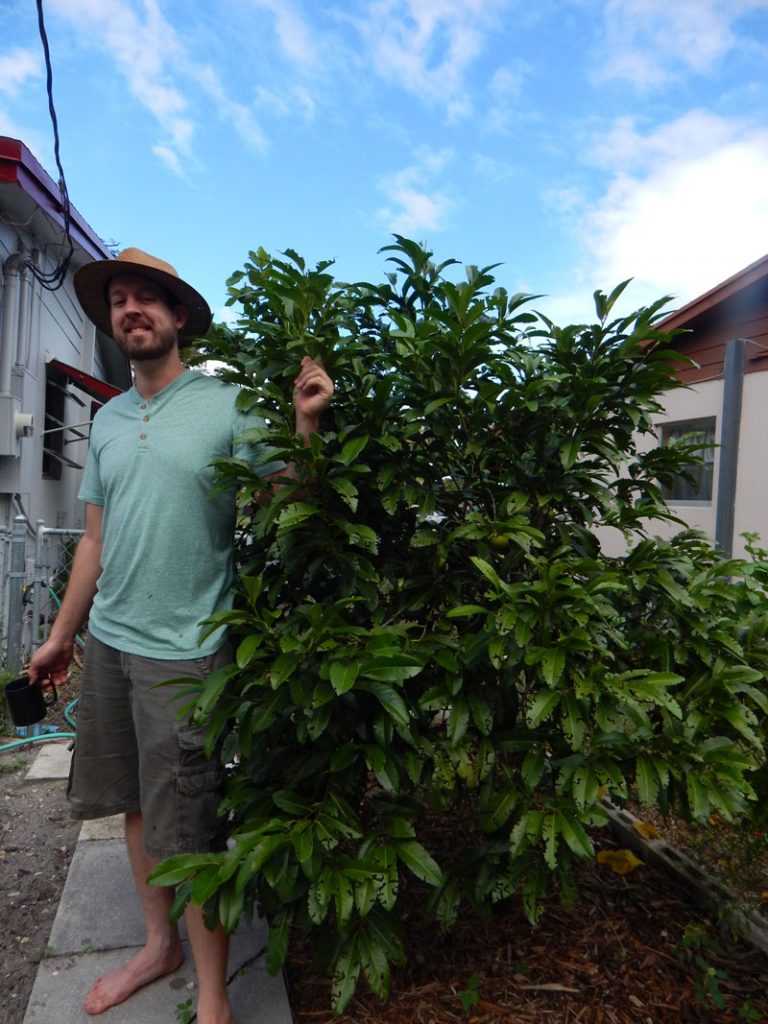
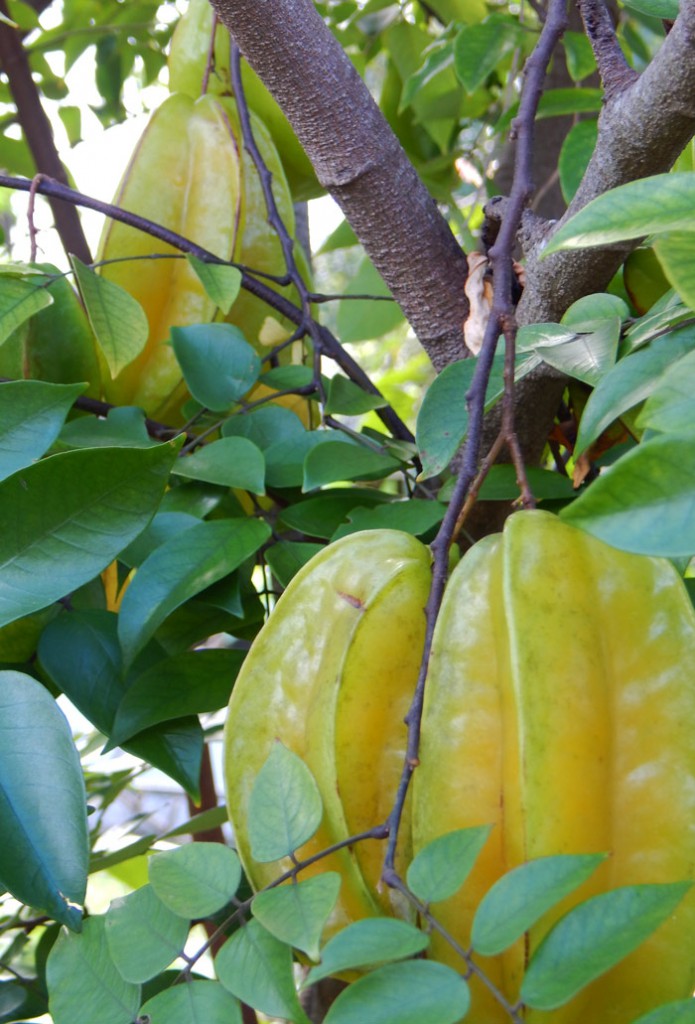
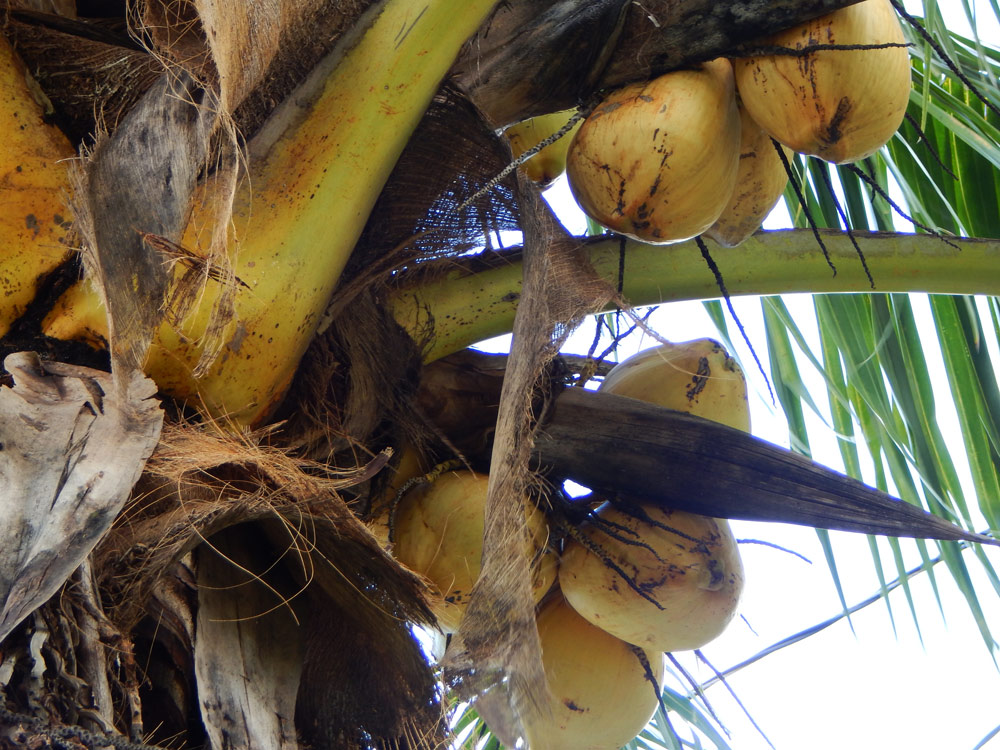
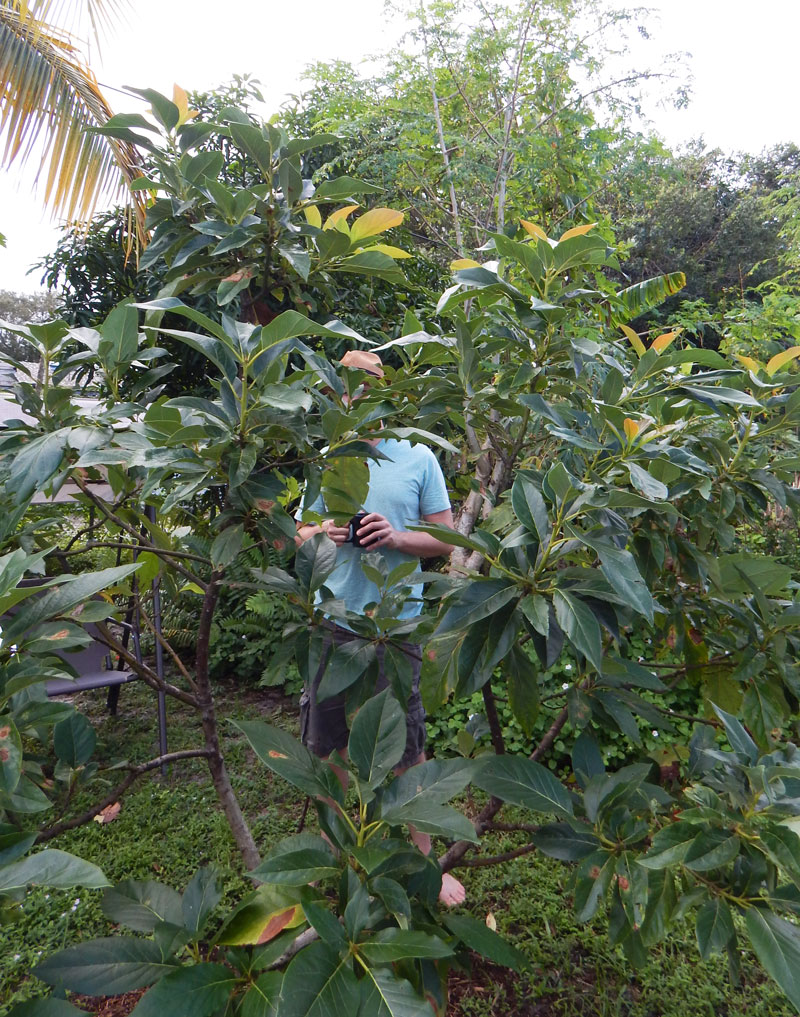
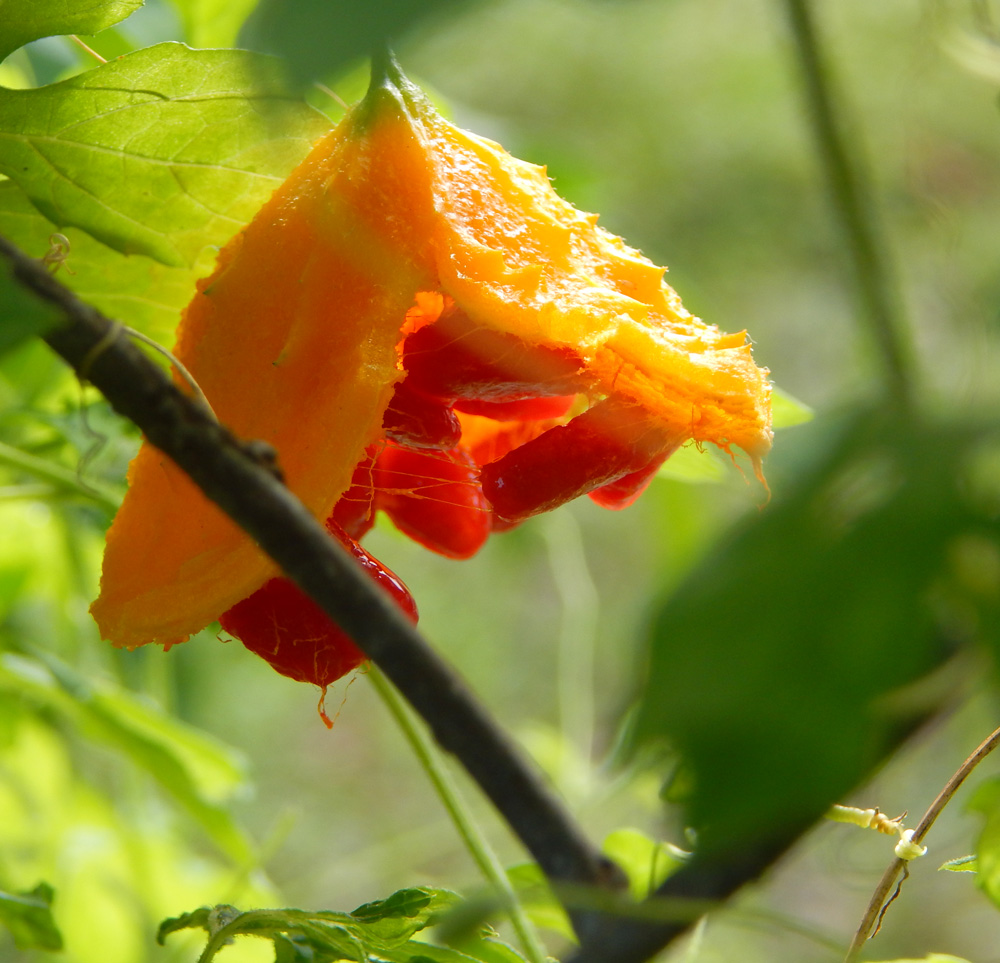

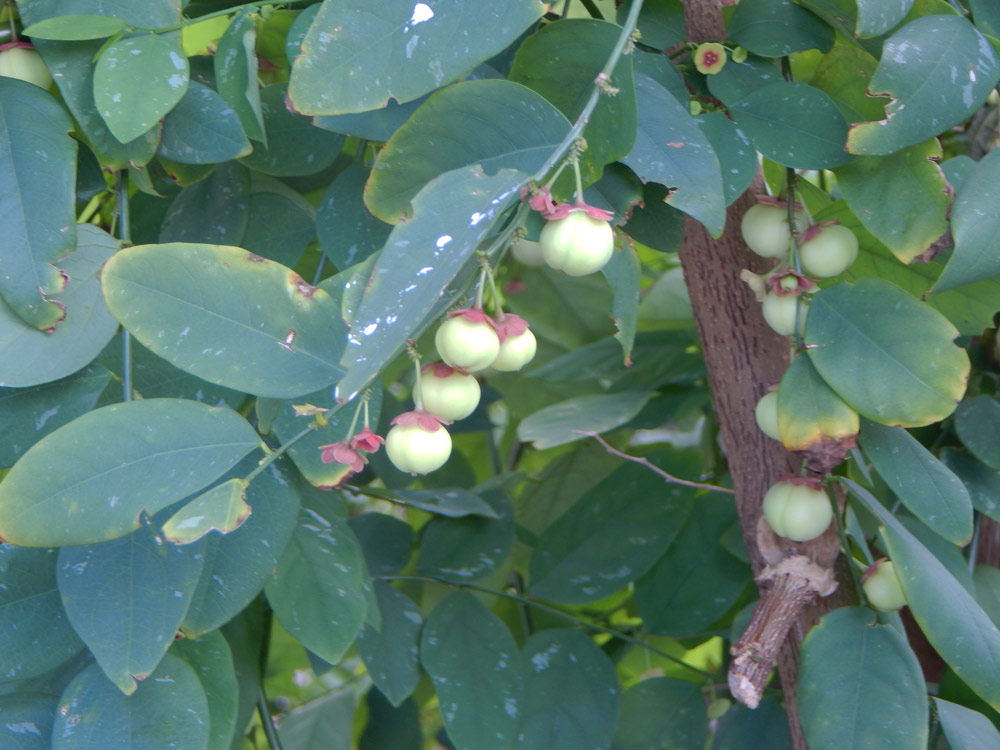
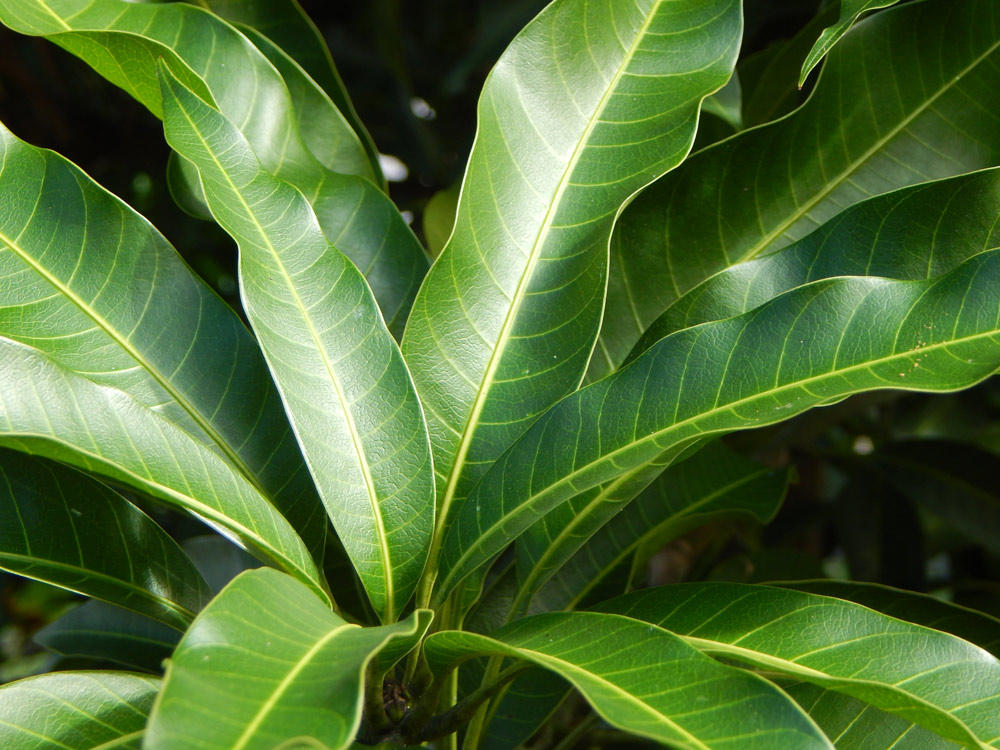
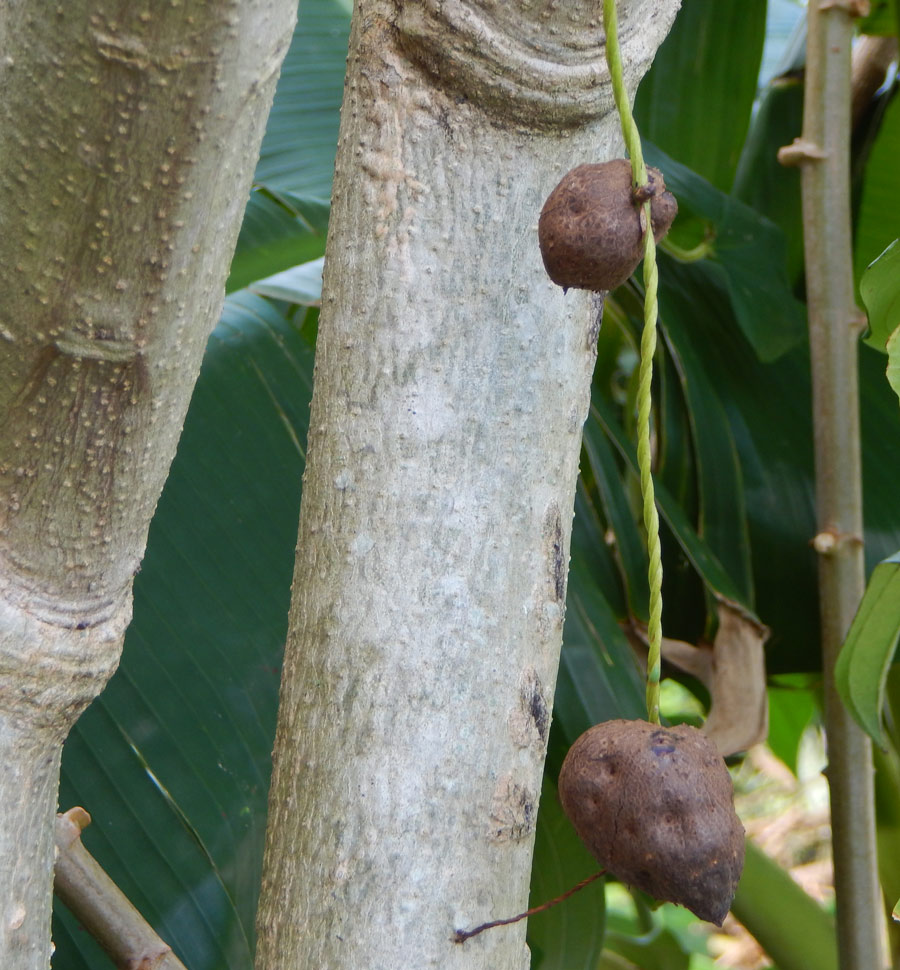
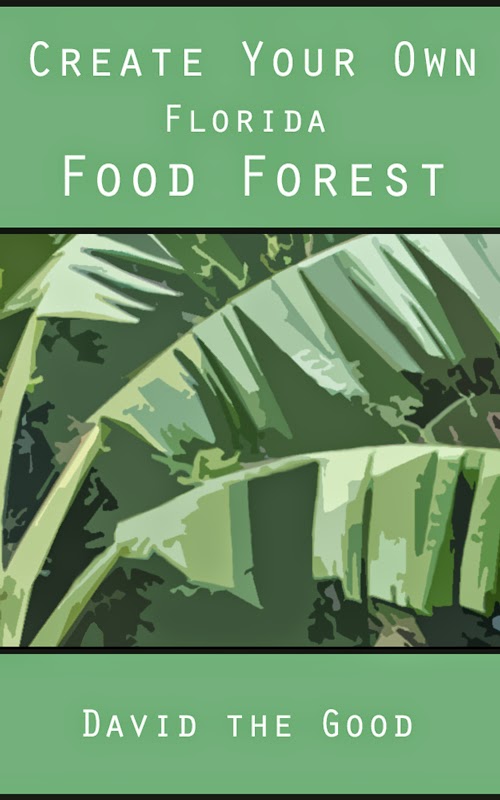

2 comments
Looking at those photos makes me want to have my own garden. Personally, I like the name of this website, “The Survival Gardener.” It speaks about your lifestyle. :) More power to you.
Thanks, Orville.
It’s easy to get started – even just a little self-watering pot on a back porch can grow some salads or herbs.
Thanks for stopping by.
Comments are closed.